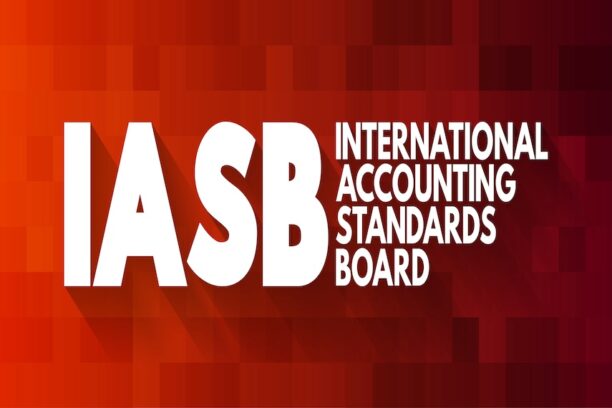I read a lot of information that rehashes the same ESG issues and/or just whines/complains about the problems. Then there are those that offer “the solution” to “the problem”. The real problem is that there is no single ESG problem and no single ESG solution. It isn’t just data, just investor demands, or just imposing ESG mandates on suppliers. Reducing carbon emissions alone, increasing diversity on your Board alone, improving workplace conditions at your operations/supplier operations alone or upgrading the recyclability of your products alone are all only single steps.
Don’t get me wrong – I know sometimes these are BIG and difficult steps requiring a tremendous amount of change, commitment and sometimes investment. These should be acknowledged and celebrated, but each is a single step – individual solutions to specific matters. ESG is a collection of rapidly evolving risks and opportunities that will require a myriad of (sometimes small) solutions to achieve a collectively larger impact. It is a huge puzzle needing many pieces to come together. It is best not to believe in silver bullets.
Sometimes, finding solutions is less difficult than determining what the problems are or what may be on the horizon that you need to know about and prioritize in the first place. The E and S of ESG are amorphous and change literally on a daily basis. Even the personal feelings of an individual’s family member can rattle markets, capture headlines and send ESG practitioners scurrying.
I think there is an infinite loop that happens on multiple ESG topics simultaneously:
- NGOs/activists are frequently the first to investigate ESG matters.
- Celebrities or professional athletes occasionally raise ESG issues that are personal for them.
- Media publicize new ESG developments, risk and trends, often in response to NGO/activist reports.
- Investors inform Boards how they want the company managed, many times specifically in relation to newly “discovered” or popular ESG risks/trends.
- B2B customers are influenced in the same way and respond by pushing management’s direction down to purchasing behaviors.
- Consumers respond via their own purchasing behaviors and expressing new key buying criteria.
- Lawsuits are filed on doctrines of securities law, fraud, regulatory violations, personal injury and other novel legal bases.
- Regulators feel public pressure and respond with new policies that address some of the issues and create new ones. NGOs/activists and the media investigate the holes and new problems – taking us back to the top of this list.
If your company makes hand tools or office furniture, why should you be concerned about an investor initiative on animal husbandry for instance?* Because the crux of the matter isn’t really animal welfare – it is how and why animal welfare became headline news overnight. Moreover, the investor may disrupt the Board for this. Today, it’s livestock. Tomorrow, it could be something related to steel used in hand tools and office furniture.
What You Can Do
So how can you keep track and stay ahead?
The concept of an ESG materiality assessment has become very popular and can be an effective way of identifying issues that are relevant to companies. I don’t intend to minimize the value these bring, but the idea can seem intimidating and often implies the use of expensive consultants to facilitate them and guide conversations. Even so, there are informal and essentially free ways companies can stay abreast of emerging ESG risks and related solutions. To take advantage of this, management must keep an open mind, try not to get tunnel vision focused on “the ESG risk” and not get swept away by slick marketing hype about “the solution”.
Here are two easy and low-cost (if not free) ways to identify ESG developments early:
- Customer feedback: Ensure sales staff are listening to customer feedback about changing needs/demands, and make sure there is process for them to push that information to management. Management needs to be sensitized to the growing importance of ESG-based buying criteria and give such input credence. R&D should know as well so they can use the information in their design, materials specifications and product performance targets.
- NGOs, activists and media: Tracking ESG news on the internet can be free, albeit rather overwhelming. Even so, it is important because these sources are frequently the catalyst for investor initiatives and customer demands. Weeding through hype, infomercials, and theoretical papers takes a good bit of effort and subject matter knowledge. We even developed a checklist to help with this burden (shameless plug for a PracticalESG.com membership). This information monitoring can (and should) be done on an on-going basis, whereas materiality assessments are frequently performed periodically/annually. Identifying ESG risks early gets them on the radar screen, giving companies a chance to assess the issue/risk and develop a response if needed.
__________________
* In response to a family member’s personal values, a major investor bought a small number of shares solely to force a change in a Fortune 250 food company’s livestock supply chain. Interestingly, on Monday, the US Supreme Court agreed to review a challenge to a 2018 California law establishing strict living and breeding conditions for pork sold in the state – essentially the same issue. Two agricultural associations argue that the conditions cannot be met without massive costs which will “fall almost exclusively on out-of-state farmers,” with the costs being passed on to consumers nationwide.










